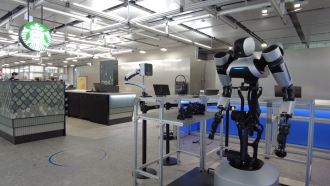
Now in its 10th year, the Belfer Research Building stands out in health research, showcasing the impact of combining philanthropy with science. Located in the heart of New York City, this state-of-the-art center is a hot spot for innovation. The Belfer family's generous $100 million donation a decade ago did more than just provide funds; it planted the seeds for a knowledge tree that's grown to cover a broad spectrum of medical research.
"Renee and Bob Belfer envisioned the potential for cutting-edge translational science to change medicine in a meaningful way, and we are deeply grateful for their transformational gift," said Dr. Robert A. Harrington, the Stephen and Suzanne Weiss Dean of Weill Cornell Medicine and provost for medical affairs at Cornell University.
Since opening its doors, the research building has doubled Weill Cornell Medicine's sponsored research funding, escalating from $191 million in 2014 to an impressive $427 million by 2023. This surge is a testament to the facility's impact and the quality and scope of research it has enabled. The building has been instrumental in fostering a 92% increase in the number of faculty funded by the National Institutes of Health.
The significance of the Belfer Research Building extends beyond numbers. It has been a crucible for interdisciplinary collaboration, embodying the ethos of team science that's vital for tackling complex health challenges. Its design, featuring 480,000 square feet of space devoted to translational research, facilitates a seamless flow of ideas among researchers across various disciplines. This collaborative environment, including 13 floors of laboratories, has been key to the institution's bench-to-bedside approach, enhancing patient care through groundbreaking discoveries in cancer, cardiovascular disease, metabolic diseases, and neurodegenerative diseases, among others.
Recently, Weill Cornell Medicine was ranked 21st among academic medical institutions receiving NIH funding, a leap of 16 spots since 2017. This climb in the rankings directly reflects the influential research conducted within the facility's walls. It's a space where theory meets practice—where research is conducted and translated into tangible health outcomes.
Research Excellence at the Belfer Research Building
The building also serves as the epicenter for several of Weill Cornell Medicine's leading programs, such as the Joan and Sanford I. Weill Center for Metabolic Health and the Sandra and Edward Meyer Cancer Center. These programs have contributed to Weill Cornell's dramatic growth and positioned the institution as a medical research and patient care leader.
Cancer research is one of the cornerstone research areas at the Belfer Research Building. Teams of scientists and clinicians have collaborated on groundbreaking studies focusing on understanding the molecular mechanisms of cancer, leading to the development of targeted therapies. These efforts have contributed to more personalized and effective treatment strategies, offering new hope to patients battling this disease.
Research into neurodegenerative diseases at the Belfer Research Building has been equally impactful. Scientists are delving into the genetic and environmental factors contributing to conditions such as Alzheimer's and Parkinson's diseases. Their work aims to uncover the biological underpinnings of these ailments, which is crucial for developing preventive strategies and therapeutic interventions.
The facility has also been pivotal in the fight against infectious diseases, particularly in the wake of global health crises. Researchers have developed vaccines and antiviral therapies, using inventive technologies to understand pathogen behavior and immune system responses. This research is essential for tackling current and future infectious disease outbreaks.
As Weill Cornell Medicine embarks on an ambitious $1.5 billion "We're Changing Medicine" campaign to expand its programs, the research building remains at the heart of this endeavor. It represents a commitment to the future of medicine—a future that promises new discoveries, treatments, and hope for patients around the globe. The past decade has been a remarkable journey of achievement and growth, all fueled by the vision and generosity of the Belfer family and the countless others who have supported this mission.
Harrington said, "Through the generosity of many donors, the Belfer Research Building enabled us to expand our core research programs, ushering in an exciting new era of growth for our institution."
Philanthropic History of the Belfer Family
The Belfer family's engagement with philanthropy, especially in the context of medical research and education, traces back decades. The family, led by prominent figures Robert A. Belfer and his wife, Renée E. Belfer, has been deeply involved in supporting health care, education, and the arts. Establishing the research facility was a milestone in their charitable journey, embodying their commitment to advancing medical research and providing researchers with the resources necessary to explore innovative treatments and cures.
"My parents were honored to make a gift that set Weill Cornell Medicine on the path to becoming a world-class research enterprise," stated Laurence Belfer, a Board of Fellows member.
The philanthropic family's contributions extend beyond financial support; they encompass a deep-seated belief in the transformative power of research. Their involvement in various boards and committees reflects an active role in shaping the strategic direction of the initiatives they support. This hands-on approach has significantly contributed to fostering a culture of excellence and innovation within the institutions fortunate enough to benefit from their generosity.
* This is a contributed article and this content does not necessarily represent the views of techtimes.com





